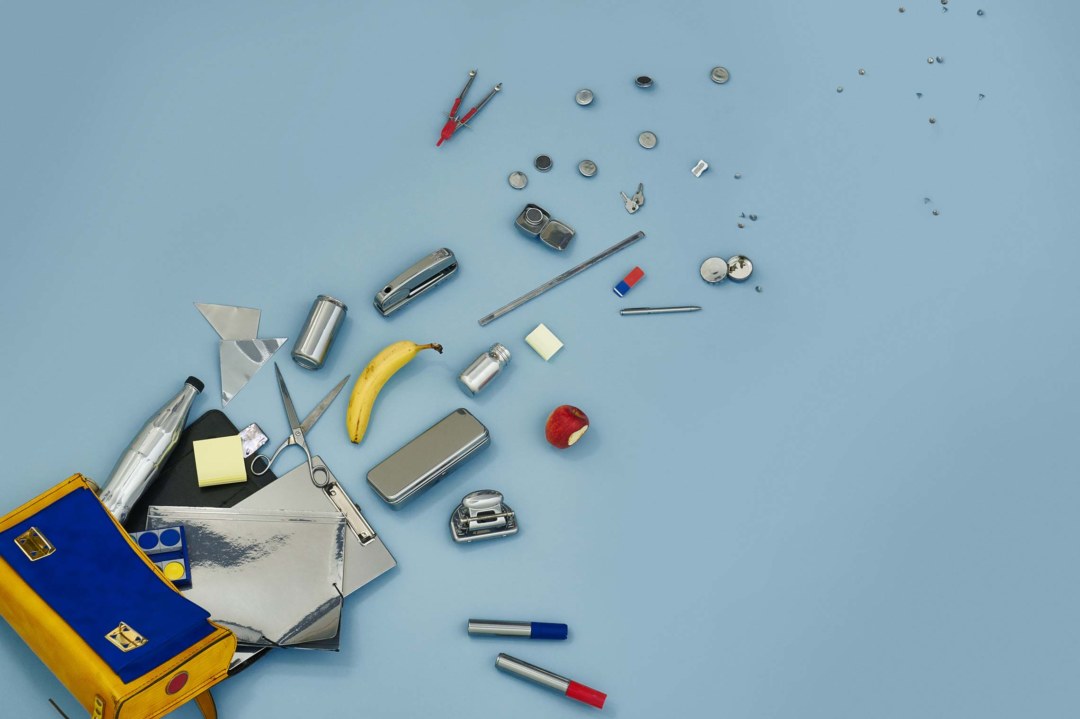“You can’t pack more chrome effect into any coating”, Michael Fiedler.
Maxed out possibilities
Wörwag product ideas often originate in a conversation among co-workers. The decade- old predecessor product had few fans left among the developers. Alexander Kiraly from Fiedler’s team embraced the challenge enthusiastically. “We wanted to distinguish ourselves from the competition and thought that technically, there’s plenty of room for improvement,” he recalls. In 2013 they presented the new lacquer to the management. And received a green light. Fiedler: “We have now maxed out the technical possibilities. You can’t pack more chrome effect into any coating.”
The principle sounds simple: Heap some aluminum pigment into your paint powder, which will float to the surface during baking to produce the mirror finish. But the devil is in the details. Fiedler illustrates the problem by running his thumb over a playing-card sized sample: “Here’s where it gets tricky. You simply can’t get rid of the fingerprints.” In fact, the harder you try to wipe them off, the worse the streaks become. That is why we need to give the chrome paint a clear protective finish. The new clear coat is thinner and shinier than the old one. It spreads better and is just as effective in resisting dirt.
“We’re experimenting here with around two hundred raw materials,” says Fiedler.
Using high voltage on sheets
Fiedler demonstrates the difference on a radiator. He sees this as one of the main fields of application for the chrome coat, although the possibilities are virtually unlimited They range from office equipment such as the hole punch on Fiedler’s desk to bicycles, to the interior of luxury cars. Applying Chrome to school furniture is also a promising idea.
“Our chrome paint could spice up the classroom. From our perspective, that’s one of the most interesting markets,” says Fiedler, who is convinced that the whole development effort will be worth it. The chief developer leads us through the laboratories. One of them contains a pile of countless cans. “We’re experimenting here with around two hundred raw materials,” says Fiedler. In order for the paint to give a homogeneous colour impression after application, the ingredients are not mixed in powder form, but first liquefied, melted and rolled into a sheet.
After solidification, the sheet is ground into a powder with a particle size in the double-digit micrometer range. Fiedler stands at the “shooting gallery”, armed with a powder gun. The tip of the nozzle he is using to spray the chrome the chrome coating onto a panel is charged with tens of thousands of volts. The air vibrates, and the paint coats the sheet. During firing the aluminum pigments will rise to the surface. Fiedler smiles at his reflection, satisfaction all over his face.

1001 ideas for school and office: Diana Liebreich got creative with chrome powder.
Michael Fiedler
has been working at Wörwag since 2000. He studied chemistry in Reutlingen, is an expert in powder coatings, and has been Director of Development since 2010. “I am particularly interested in projects in the automotive industry,” reveals the 45-year old. “That’s the origin of my enthusiasm for chrome effects.”
Text: Sascha Maier
Photo: Jadwiga Galties
